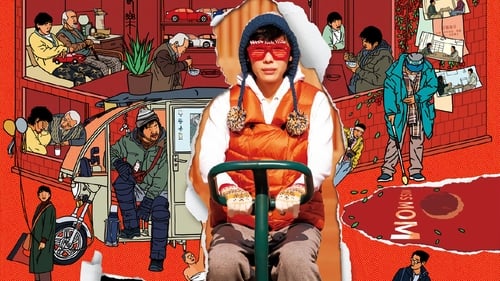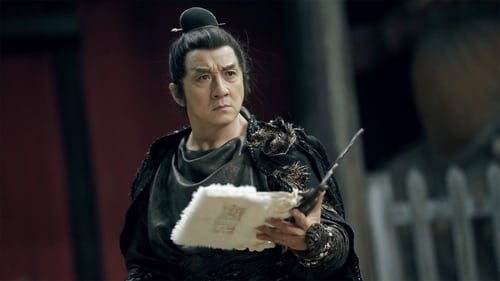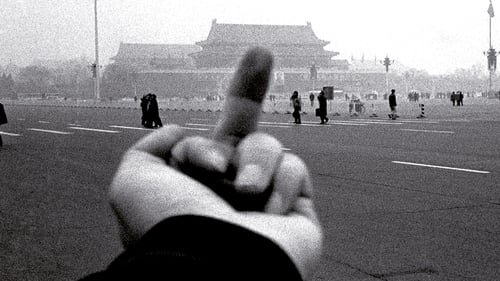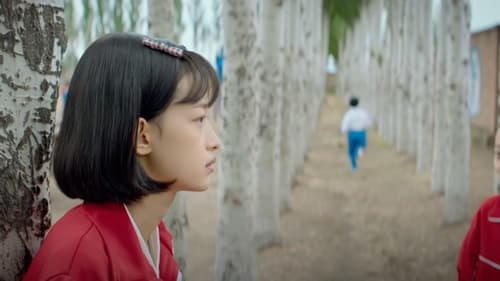
Writer

Music
Волшебник Пу Сунлин – охотник на колдунов из других измерений. Он живет на вершине горы вместе со своими помощниками – веселыми гоблинами Фарти, Хэппи и Тысячей Рук. Помогая поймать похитителя драгоценностей, Пу встречает опасного соперника. Этот могущественный колдун вместе со своей сестрой питается душами молодых девушек, пообещав им вечную красоту. Новое дело пугает Пу, но он не привык отступать!

Director of Photography
Ai Weiwei’s Appeal ¥15,220,910.50 opens with Ai Weiwei’s mother at the Venice Biennial in the summer of 2013 examining Ai’s large S.A.C.R.E.D. installation portraying his 81 day imprisonment. The documentary goes onto chronologically reconstruct the events that occurred from the time he was arrested at the Beijing airport in April 2011 to his final court appeal in September 2012. The film portrays the day-to-day activity surrounding Ai Weiwei, his family and his associates ranging from consistent visits by the authorities, interviews with reporters, support and donations from fans, and court dates. The Film premiered at the International Film Festival Rotterdam on January 23, 2014.

Cinematography
A short documentary about the making of "Straight" and "Forge" (2008-2012).

Director of Photography
Ping’an yueqing investigates the 2010 death of Qian Yunhui, a village leader from Yueqing in the eastern province of Zhejiang, who died under suspicious circumstances that authorities deemed a road accident. The film recounts Qian’s death in which he was crushed by the wheels of a truck.

Cinematography
Early in 2008, the district government of Jiading, Shanghai invited Ai Weiwei to build a studio in Malu Township, as a part of the local government's efforts in developing its cultural assets. By August 2010, the Ai Weiwei Shanghai Studio completed all of its construction work. In October 2010, the Shanghai government declared the Ai Weiwei Shanghai Studio an illegal construction, and was subjected to demolition.

Self - Weiwei's Videographer
Ай Вэйвэй — самый известный китайский современный художник, «пекинский Энди Уорхол» и хулиган, создавший себе имя и репутацию не только выставками в Tate Modern, но и открытым противодействием китайским властям. Действующий в условиях строгой цензуры и бесчеловечного законодательства, Ай продолжает творить и сплачивать людей с помощью своего искусства и социальных сетей. В ответ на это китайские власти закрыли его блог, избили, снесли бульдозером его недавно построенную студию и тайно заключили художника под стражу.

Cinematography
As a sequel to Ai Weiwei’s film "Disturbing the Peace," the film "So Sorry" (named after the artist’s 2009 exhibition in Munich, Germany) shows the beginnings of the tension between Ai Weiwei and the Chinese Government. In "So Sorry," you see the investigation led by Ai Weiwei studio to identify the students who died during the Sichuan earthquake as a result of corruption and poor building constructions leading to the confrontation between Ai Weiwei and the Chengdu police. After being beaten by the police, Ai Weiwei traveled to Munich, Germany to prepare his exhibition at the museum, Haus der Kunst. The result of his beating led to intense headaches caused by a brain hemorrhage and was treated by emergency surgery. These events mark the beginning of Ai Weiwei’s struggle and surveillance at the hands of the state police.

Cinematography
"Ordos 100" provides a picture of an Ai Weiwei at the pinnacle of his artistic fame, but not yet in the political hot water that was to give him a different kind of notoriety. The film centers on a grand architecture project in Ordos, to be designed by Ai Weiwei.

Producer
In June 2008, Yang Jia carried a knife, a hammer, a gas mask, pepper spray, gloves and Molotov cocktails to the Zhabei Public Security Branch Bureau and killed six police officers, injuring another police officer and a guard. He was arrested on the scene, and was subsequently charged with intentional homicide. In the following six months, while Yang Jia was detained and trials were held, his mother mysteriously disappeared. "One Recluse" is a documentary that traces the reasons and motivations behind the tragedy and investigates a trial process filled with shady cover-ups and questionable decisions. The film provides a glimpse into the realities of a government-controlled judicial system and its impact on the citizens’ lives.

Cinematography
On December 15, 2008, a citizens' investigation began with the goal of seeking an explanation for the casualties of the Sichuan earthquake that happened on May 12, 2008. The investigation covered 14 counties and 74 townships within the disaster zone, and studied the conditions of 153 schools that were affected by the earthquake. By gathering and confirming comprehensive details about the students, such as their age, region, school, and grade, the group managed to affirm that there were 5,192 students who perished in the disaster. Among a hundred volunteers, 38 of them participated in fieldwork, with 25 of them being controlled by the Sichuan police for a total of 45 times. This documentary is a structural element of the citizens' investigation.

Director of Photography
"Disturbing the Peace" is a documentary of an incident during Tan Zuoren's trial on August 12, 2009. Tan Zuoren was charged with inciting subversion of state power. Chengdu police detained witnessed during the trial of the civil rights advocate, which is an obstruction of justice and violence. Tan Zuoren was charged as a result of his research and questioning regarding the 5.12 Wenchuan students' casualties and the corruption resulting poor building construction. Tan Zuoren was sentenced five years to prison.

Writer









